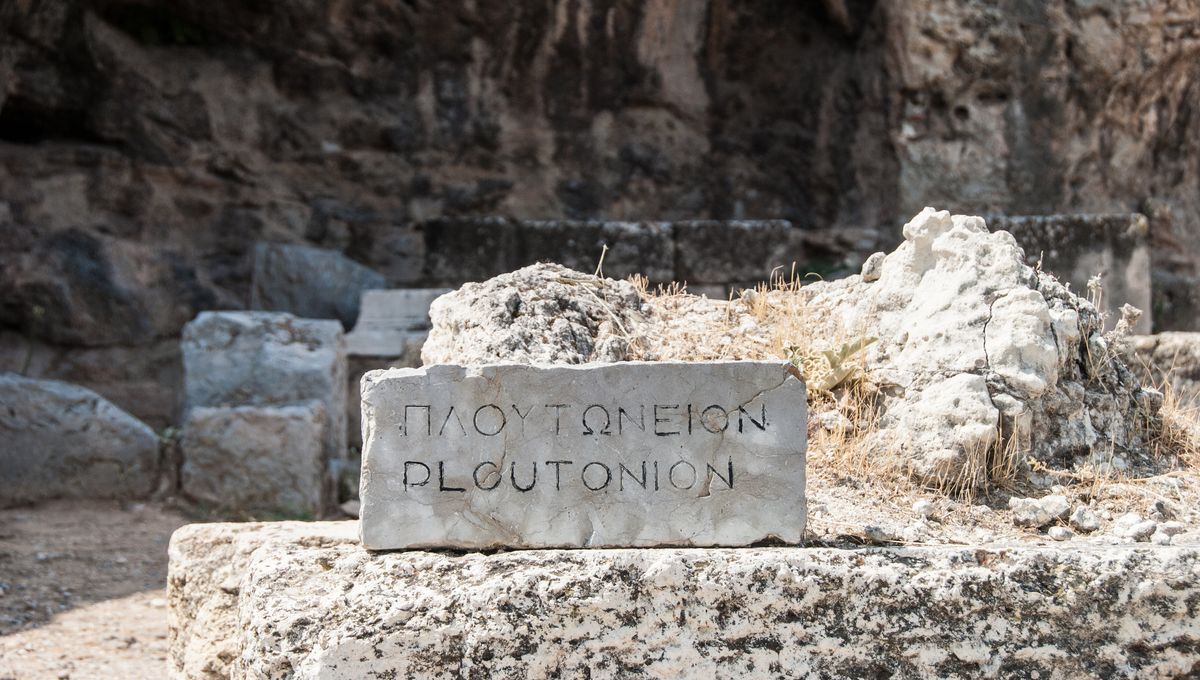
There is a place in Turkey where strange vapors issue from the ground, which ancient Greco-Roman people used in their rituals to the gods of the underworld. The place, known as Pluto’s Gate, is very much a deadly portal between two worlds.
Pluto’s Gate is a great example of a ploutonion, a religious temple dedicated to the god Pluto (originally Hades, but the name eventually became synonymous with the underworld itself). It was rediscovered near a town called Pamukkale in southwestern Turkey in 2013 after Italian archaeologists followed the route of a thermal spring.
According to historical sources, this gate to Hell was known to be located somewhere in Hierapolis, which was founded in 190 BCE by Eumenes II, King of Pergamon. The city was a vibrant location celebrated as a center of healing, as physicians believed the thermal springs that issued from its depths had curative properties that could heal the sick and ease those with chronic complaints. The city was eventually gifted to the Roman Republic after the death of the last Attalid king of Pergamon in 133 BCE.
Although Hierapolis would later play an important role in the spread of Christianity in the first century CE the temple to Pluto remained a site where ancient peoples could commune with the chthonic gods – the gods of the underworld.
The temple was built with a gateway and surrounding arena that led into the cave itself. Visitors were forbidden to enter the interior, but they could sit on raised seats and observe the priests at work. At sunrise, these agents of the divine would lead bulls through the arena towards the gate and watch as the animal struggled and quickly died while the priests remained unharmed.
The visitors could even take part in this grizzly ritual themselves. They could buy small animals and birds (the proceeds of which supported the temple’s upkeep in the same way a modern museum gift shop might) which they would then release into the arena. Upon entering, the animals would succumb to the Hadean breath of death – leaving the onlookers mystified and awestruck.
An account of this was recorded by Strabo, a famous Greek geographer, philosopher, and traveler, who stated: “This space is full of a vapor so misty and dense that one can scarcely see the ground. Any animal that passes inside meets instant death. I threw in sparrows and they immediately breathed their last and fell.”
The fumes belching from the cave are still so potent that birds will occasionally plummet to their deaths if they get too near.
These fatalities are caused by gases that accompany the thermal waters that issue from a fissure within the cave. In 2018, researchers examined the gas, volcanic carbon dioxide (CO2), and found that its concentration in the atmosphere varied depending on how close you were to the entrance. Within the arena where the animals were sacrificed, CO2 levels could be anywhere between 4 and 53 percent depending on how close you were to the mouth of the cave and your height above ground level.
The closer you were to the floor, the stronger the concentration was. Essentially, the vapor formed a lake of invisible toxic fumes. The fumes were so strong that they could kill a human within a minute of being exposed to the denser areas.
The priests themselves were only able to tolerate the ritual because they stood taller than the bulls and other animals they sacrificed. This meant their mouths and noses remained above the deadly clouds that pooled below.
Nevertheless, their exposure to the CO2 in the surrounding atmosphere would have left them somewhat high and hallucinating on the fumes.
Source Link: Pluto’s Gate: The Ancient Doorway To The Underworld That Is Still Deadly